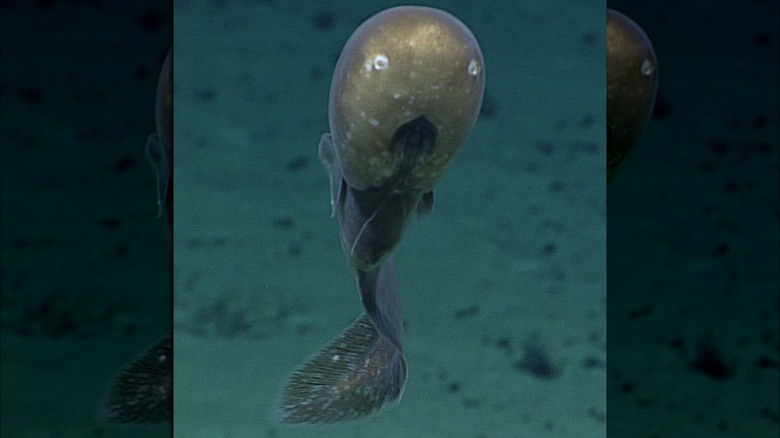Here's What You Didn't Know About Faceless Fish
Let us begin with the fact that a faceless fish exists (via Smithsonian Magazine). No longer a thing of fairy tales or nightmares, this fascinating fish without a face has officially joined the ranks of the 9% of sea creatures we've both observed and classified. Hailing from an astounding 13,000 feet beneath the ocean's surface, this sea critter was recently spotted off the coast of Australia.
In an interview with The Guardian, Dr. Tim O'Hara, senior curator of marine invertebrates at Museums Victoria, described the fish as looking like it had "two rear-ends." When viewing the fish from a side angle, its facial features are not visible. As it turns out, this mysterious marine creature's mouth is situated on its underside. While it appears to have no other semblance of facial features, Gizmodo reports that eyes have been located multiple layers beneath the fish's skin. What good they can do at the extreme depths the fish inhabits is not known.
The faceless fish was first discovered in 1874
You might assume this wonderous deep-sea swimmer is new to our records. However, that assumption is incorrect. In reality, the faceless fish was witnessed once before, over a century ago.
Smithsonian Magazine reports that the faceless fish — scientifically referred to as Typhlonus nasus — first surfaced in August of 1874. According to scientific journal records, the faceless fish was discovered outside Australian waters when the HMS Challenger embarked on its first-ever global expedition. The fish was not spotted in waters off Australia for over a century before resurfacing in 2017 (via The Guardian). But since its discovery, the fish — which is technically a type of cusk eel (via Gizmodo) — has been spotted on rare occasions in places like the Arabian Sea, Hawaii, and Japan.
Despite having its eyeballs situated under layers of skin and a mouth on its underside, the faceless fish is remarkably resilient. It is known to thrive in sea levels where the waters bear an arctic chill and the underwater pressure is literally crushing.

